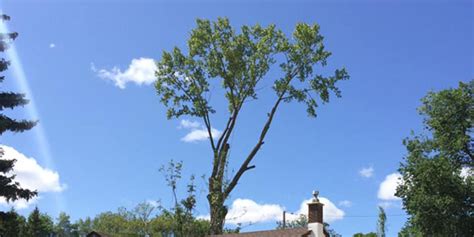How Far Can A Tree Lean Before It Falls
Ronan Farrow
Apr 04, 2025 · 3 min read

Table of Contents
How Far Can a Tree Lean Before it Falls?
Trees, majestic symbols of nature's resilience, possess an incredible ability to withstand external forces. However, there's a limit to their flexibility. This article explores the fascinating question of how far a tree can lean before succumbing to gravity and falling.
Factors Determining a Tree's Lean Tolerance
Several factors intricately influence a tree's ability to withstand leaning:
1. Species and Wood Type:
Different tree species possess varying wood densities and structural properties. Hardwoods, such as oak and maple, generally exhibit greater strength and resistance to leaning compared to softwoods, like pine and fir. The inherent strength of the wood plays a crucial role in determining the tree's capacity to withstand stress.
2. Root System:
A tree's root system is its lifeline, anchoring it firmly to the ground. A robust and extensive root system provides superior support and stability, enabling the tree to endure greater leaning angles. Conversely, trees with shallow or damaged root systems are more susceptible to falling. The soil type and its compaction also directly influence root growth and strength.
3. Tree Age and Health:
Mature trees, having developed strong root systems and a thick trunk, tend to withstand leaning better than younger, less established trees. Furthermore, a tree's overall health significantly impacts its ability to resist leaning. Diseases, pests, and injuries can weaken the tree's structure, making it more vulnerable to falling.
4. Leaning Angle and Direction:
The angle at which the tree leans is paramount. A gradual lean is generally more manageable than a sudden, sharp incline. Similarly, the direction of the lean relative to prevailing winds and other external pressures influences the stress on the tree's structure.
5. External Factors:
External factors like strong winds, heavy snow, and ice storms can significantly increase the stress on a leaning tree, potentially causing it to fall. The cumulative effect of these factors over time can progressively weaken the tree and reduce its tolerance to leaning.
Determining the Point of No Return
There's no single definitive answer to precisely how far a tree can lean before falling. It's a complex interplay of the factors outlined above. However, a lean exceeding 20-30 degrees is generally considered cause for concern, especially if accompanied by other signs of instability such as root exposure or visible cracks in the trunk or branches.
Professional arborists utilize sophisticated assessment techniques, including visual inspection, soil testing, and sometimes even specialized equipment, to gauge a tree's stability and determine the potential risk of falling.
Conclusion: Safety First!
While understanding the factors influencing a tree's ability to withstand leaning is valuable, it's crucial to prioritize safety. If you notice a tree leaning excessively or exhibiting signs of instability, contact a qualified arborist for a professional assessment. They can accurately assess the risk and recommend appropriate actions, such as pruning, bracing, or removal, to prevent potential accidents. Don't underestimate the power of nature – err on the side of caution.
Featured Posts
Also read the following articles
| Article Title | Date |
|---|---|
| How Far Can Recurve Bow Shoot | Apr 04, 2025 |
| How Deep Should Water Be To Dive | Apr 04, 2025 |
| How Far Can An Electric Golf Cart Go | Apr 04, 2025 |
| How Do You Get Sand Out Of A Pool | Apr 04, 2025 |
| How Do You Sell A Car That Doesnt Run | Apr 04, 2025 |
Latest Posts
-
How Long After Bbl Laser Can I Workout
Apr 05, 2025
-
How Long After Banding Goats Are They Sterile
Apr 05, 2025
-
How Long After Applying Fungicide Can I Fertilize
Apr 05, 2025
-
How Long After Alcohol Can I Take Xanax
Apr 05, 2025
-
How Long After A Storm Can I File A Claim
Apr 05, 2025
Thank you for visiting our website which covers about How Far Can A Tree Lean Before It Falls . We hope the information provided has been useful to you. Feel free to contact us if you have any questions or need further assistance. See you next time and don't miss to bookmark.
